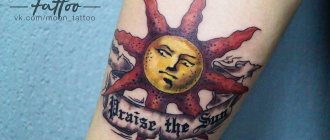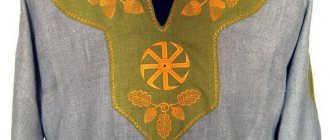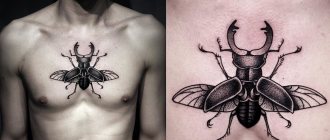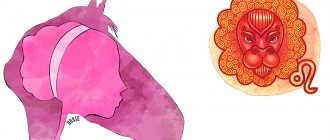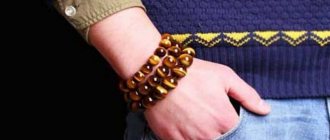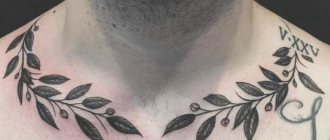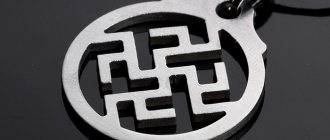.
For people, the Sun and Moon have been objects of veneration and worship since ancient times. These heavenly bodies, replacing each other, accompanied a person through life. They were personified along with other deities, and stories and myths were written about them. The symbol of the Moon and the Sun was applied to clothing and the body, figures similar in shape to the luminaries were made, and they were used as amulets and amulets, believing in the power of the positive energy of these signs.
The sun is the most powerful energy
From the point of view of science, everything that surrounds us consists of different types of energy. One of the most powerful is the solar one - a symbol of masculinity. The daylight personifies activity, pressure, movement, life, its warmth and development.
The energy of the Sun gives strength and the ability to act physically, directs towards the embodiment of ideas and achieving goals. It is considered a symbol of endless life, a pure and bright soul with positive energy.
Jupiter symbol
The symbol of the largest planet, named after the main god in Roman mythology, comes from the Greek letter zeta, Z. The Greek Zeus is the equivalent of the Roman Jupiter. The crossbar, which makes the sign look like a cross, was added in the early 15th century. to make the sign Christian. This symbol also means zinc and Thursday (English Thursday comes from “Thor’s day,” as translated from Latin dies Jovis, “day of Jupiter,” hence the French jeudi. Both Jupiter and Thor were thunder gods. At one time this day was called Thundersday, "thunderstorm day", hence the German Donnerstag). In biology, this symbol denotes a perennial plant.
The moon as the source of the feminine
The opposite energy of the Sun - lunar - is the embodiment of the feminine principle. This makes the night luminary a symbol of enormous power hidden under deceptive peace and tranquility.
The moon has always attracted people with its mystery. By worshiping her, they believed in a power that could outshine even the Sun itself. For this reason, people treated eclipses with great fear.
The energy of the Moon represents calmness, comprehension, softness and coldness. This is the spiritualization of creative potential, the beginning of a flow of thoughts and ideas.
Relationship between the Sun and Moon in astrology
According to astrological theory, both luminaries have a very great influence on the character and destiny of a person. The element of the Sun is Fire. It is responsible for all processes of the individual’s consciousness. The Moon, in turn, draws strength from Water energy and guides the subconscious of people. In union, these celestial bodies are able to bring awareness of their life purpose, philosophical reflection and spirituality.
This aspect is able to reveal itself most when it is in the signs of the Zodiac belonging to the elements of Water or Fire. The Sun-Moon conjunction in the natal chart can tell not only about certain character traits inherent in an entire generation of people, but also predict their future fate. With the help of this aspect, you can learn about: personal characteristics, worldview, internal reactions to external stimuli, behavior, and reserves of internal energy.
The power of signs in a couple
Depicting the Sun in ancient times as a closed circle with a dot in the center, people associated this symbol with infinity, believing that everything in the world is cyclical, incl. and occurring in the fate of each event.
Decorating their clothes with this sign, they put into it the meaning of the infinity of the existence of life on Earth and time itself. A vicious circle was considered a sign of protection from bad energy - damage, spells and any other negative impact.
The Slavs, when applying the sign, invested a special meaning in the process - the restoration of their energy. The sign, according to legend, brought financial and family well-being, and also preserved the strength of the male spirit.
The presence and number of rays in the circle had its own meaning:
- four - burning earthly fire and all other elements of nature, replacing each other;
- six is a symbol of the wheel of the Sun god, with the help of which he rotates the universe;
- eight - the power of the solar circle. Rays directed clockwise are a symbol of movement, eternity. The sign was applied not only to clothes, but also to household items - tablecloths, towels, curtains.
The Moon, as a celestial body that replaced the Sun, was associated with the dark, unknown sides of life, thereby imparting mysticism and mystery to this sign.
It was often added to clothing as part of embroidery or traced onto household items. There were two forms of image:
- a simple rhombus with a missing corner on the right - carries the meaning of the feminine principle;
- the lunar cross - a symbol of the change of moons during different phases - attracts fertility and good luck to the house in a series of current affairs.
Celebrating Winter Solstice
The holiday of the winter solstice was called Yulia, Kolyada or the Night of Chernobog.
You may be interested in: The meaning and origin of the “Sun” amulet in different cultures of the world
Despite its gloomy name, this holiday was full of fun and joy. They greeted him as soon as winter came and with friendly fun saw off the sun to rest until the warm spring.
This holiday was associated with the end of summer work, and now the Slavs could rest and eat all winter with supplies prepared over the summer.
On this day, the god of the young winter Sun Kolyada gave gifts to the children, and the lord of evil spirits Chernobog tried to demonstrate his power.
Fierce Frost wandered through the forest and waited until some unlucky traveler wandered into his icy paws. In order not to fall into the trap of evil forces in a dream, it was necessary to walk until the morning.
Interesting! That Antisalt was used not only at winter festivities. This sign was popular among sorcerers and warriors who devoted themselves to Chernobog. It was believed that his dark power would protect him from misfortunes, and would reflect all evil intentions into the offender.
Heavenly bodies tattoo
Tattooing has been an important ritual since ancient times. From the image on the body one could understand a person’s belonging to a certain group, his marital status and even the number of children.
When choosing a tattoo, people even today put an individual meaning into the image - an appeal to the world, spoken without words.
Sketch options
The Sun and Moon are celestial bodies that exist in opposition to each other. Likewise, in the image on the body they can be united or deliberately opposed.
There are three most common options.
- The luminaries merge, forming a single whole - the embodiment of the unity of opposites, a person understood and accepted both sides of his soul.
- The Sun in the image dominates the Moon or even absorbs it (or the opposite version) - a symbol of the eternal struggle between male and female, light and darkness, day and night, in which a person has decided for himself whose side he takes.
- The luminaries are located at a distance from each other, and there is a large distance between the Sun and the Moon (often depicted on different sides of the body) - a sign of harmony and stability.
Place on the body
The image is suitable for both women and men. The size and choice of place depends on the preferences of the person. Main places of application:
- in men - chest, shoulder, upper back, calf area;
- in women - the neck, arms (often the wrist or hand), lower back, thigh, ankle, and to hide from prying eyes, they are placed in the lower abdomen, on the pubis, buttock or inner thigh.
An image with the symbols of the Sun and Moon is chosen by people with a philosophical approach to life or romantics by nature, who create and maintain the spiritual and physical components of their soul in unity.
Celebrating the Summer and Autumn Solstice
These holidays were not so widespread, but still had important meaning for the ancient Slavs.
Summer Solstice refers to the Summer Solstice, which celebrated the longest day and celebrated the power of sunlight.
It was called Kupava, and later became Kupala Day. Before the holiday, people washed themselves clean and wove wreaths. On the day of the celebration, they lit bonfires and jumped over them, and at night they tried to find the Fern Flower in order to appeal to Kupala itself. The symbol of the Summer Solstice was Salting.
On the Autumn Solstice, the Slavs celebrated a rich harvest, and thanked the goddess of fertility Lada for it. In the autumn days, people sought to celebrate a wedding so that Lada would take this marriage under her protection. On this day, the tables were set with pies with cabbage, apples and lingonberries.
According to tradition, they baked a huge pie the size of a man, behind which the priest was hiding. If it was not visible because of the pie, it was believed that the harvest that year was rich.
You may be interested in: Seal of Veles: Bear's paw, wolf's paw: Symbols and signs of Veles
Before the New Year, the Slavs extinguished the old fire in the stove and lit a new one, baked loaves, and decorated the walls of the house with rowan berries, which protected against evil forces. The symbol of the Autumn Solstice was Antisalt.
Types of amulets
Since ancient times, people at significant moments in their lives have resorted to rituals and used magical objects for protection or to concentrate the necessary forces in certain situations. The power of amulets and amulets is also believed in the modern world.
Having a figurine with the image of the Sun and Moon with you means being under the protection of these heavenly bodies and receiving positive energy from them, which helps you to be happier, more successful, and more successful.
- A talisman in the form of the Sun and the Moon, which merge into one face and symbolize harmony, will support you in moments of transforming your life for the better. The sign will strengthen the strengths of the individual and help in the development of new abilities. The sun reveals creative potential, accumulates new ideas, and expands human consciousness. Moon - helps develop intuition and anticipate your actions in advance. The daylight is made of gold material, the Moon is made of silver.
- A talisman in the form of separate figures placed side by side gives a balance of energies, helps to achieve success and well-being.
- The Black Sun protects and protects the owner from negativity, damage, and slander. Able to impart strength to reveal a person’s secret abilities.
- The Slavic Sun God amulet reveals the owner’s inner potential and helps in overcoming fear of change.
- The Lunnitsa amulet is a powerful female protector that gives the owner intuition. It will bring prosperity to a girl’s life, drive away misfortunes, illnesses, and the evil eye. The symbol is often worn as everyday jewelry: it can be made in the form of earrings, a pendant, a bracelet pendant or a brooch.
Moon tattoo meaning
This tattoo is often the choice of people with a secretive nature who love privacy.
The image is also common among creative people who want to stand out and show their individuality and uniqueness. A crescent moon tattoo in combination with a star is a symbol of a person’s belonging to the Muslim religion. Muslims consider the crescent moon a symbol of development and growth. And in Christianity, the heavenly body was associated with the Virgin Mary.
The great holiday of Easter is still determined by the lunar calendar, and it is always celebrated on the new moon.
A tattoo can have the following meanings:
- mystery, mystery and mysticism;
- femininity, beauty, softness, tenderness;
- variability, hidden power, intuition;
- the ability to find their own paths in the world and follow them;
- well-being and harmony.
For women
Many peoples identified the Moon with the beauty and mystery of the feminine principle. For example, the Greeks had the moon goddess Artemis, the patroness of all living things.
It was usually compared to the endless cycle of life and death. It occupied a fundamental place in Chinese culture and was also worshiped as a symbol of the mysterious yin energy. Among the ancient Mayans and Incas, the moon goddess was associated with the image of the mother.
She was considered the patroness of pregnant women and the protector of fertility and the family hearth. For girls, the Moon tattoo is primarily associated with motherhood. The presence of such a drawing on a girl may indicate her desire to become a mother, because the moon was personified with motherhood and procreation.
Most often, a woman with such a pattern is shrouded in an aura of mystery and mysticism, which sets her apart from many others. She is interested in magic and astrology.
Sometimes a body pattern is chosen only because it is decorative.
For men
The Moon God was revered in Ancient Egypt, in Sumerian mythology, and also among the Slavs. In all beliefs, this god was endowed with wisdom, magic, secret knowledge and great power.
Moon tattoo for men can be interpreted as:
- strength of mind and body;
- desire for harmony with the world;
- wisdom, self-knowledge, self-improvement;
- secret knowledge.
